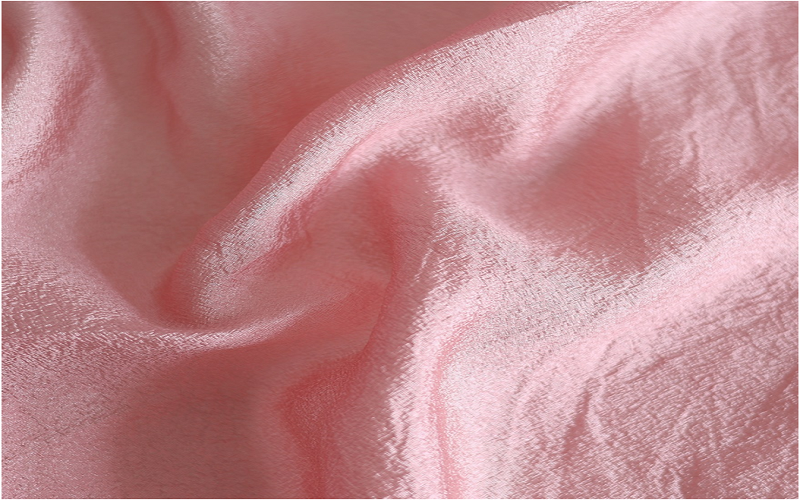Purchasing fabric from overseas markets is now simpler than ever thanks to the growth of e-commerce and globalization. Purchasing fabric from abroad presents a number of significant considerations, but it also gives up a world of options in terms of design, quality, and cost. We’ll go over some important considerations when selecting international fabric in this article.
1. Verify Fabric Composition
Checking the fabric composition should be one of your first priorities. Materials may be blended differently in other countries than they are in your home country. For instance, blended polyester, nylon, and synthetic fibers are frequently used in Indian textiles as opposed to pure cotton or silk.
Before making a purchase, it’s crucial to confirm the precise composition to make sure it will be suitable for the purpose you have in mind. The composition will have an effect on things like cost, breathability, durability, and care instructions. Verify that any decorations, prints, or patterns work well with the main material.
2. Consider Fabric Treatment
Be mindful that fabrics made in certain nations can include chemical treatments like flame retardants, waterproofing, or formaldehyde. These may have an impact on safety as well as how the cloth feels and handles. Inquiring with suppliers about any chemical treatments used is a smart idea.
Before using the cloth, you should also make sure it has been sanitized or needs to be washed again. Pre-washing may be required because untreated fabrics imported from specific countries have a higher risk of having bacteria or molds.
3. Consider Fabric Quality
It may be more difficult to evaluate fabric quality when sourcing from abroad until it is delivered. Request high-resolution images of the fabric from vendors, and if at all feasible, read customer feedback. Find out how the supplier handles quality control.
In the event that you must return any defective yards, make sure you review the supplier’s return policy. If quality cannot be accurately determined from photos alone, it is also recommended to order sample swatches beforehand. This enables you to inspect the product for defects, color correctness, or other problems prior to placing a large order.
4. Allow for Transport Time
International shipping will typically take longer than domestic shipping. Customs and port delays may also affect transit. For foreign fabric orders, it’s a good idea to account for a lead time of two to four weeks.
Order the fabric well in advance of the date you need it. Share your production schedule with your suppliers so they may assist in supplying a reasonable estimated time of arrival. If you need to place an order right away, choose expedited shipment.
5. Consider Costs of Import Fees
Depending on the nation of origin and your area, you might be required to pay import tariffs, taxes, or brokerage fees when importing fabric from overseas. The ultimate cost may increase dramatically as a result of these extra expenses.
Examine your nation’s import regulations and duties to get a precise estimate of the overall cost of the cloth. Request detailed quotations from vendors that include any possible import duties. To make things easier, you might also wish to see if providers have delivery terms that include duties.
6. Check Fabric Care Instructions
It is imperative to thoroughly examine the care instructions for the fabric when obtaining goods from overseas. Compared to domestic textiles, overseas textiles may demand different maintenance. Some might not be appropriate for machine washing; instead, they should be dry cleaned. Others can require other drying methods, such as hanging or lying flat, instead of using a dryer. There are also some fabrics that contain peculiar directions for ironing or storing.
Ensure that you fully comprehend any care labels, correctly translating them if necessary because different languages or symbols may be used. Never expect that the treatment will be the same as it is. If in doubt, it’s a good idea to wash as well as dry a tiny sample of the cloth to see how it holds up. This lets you observe the fabric’s response alongside guarantees that shrinking or damage won’t come as a surprise. It is crucial to strictly adhere to the care instructions included in order to preserve the fabric’s lifespan, in addition to colorfastness, as well as quality.
7. Consider Sustainable and Ethical Factors
Selecting international fabric suppliers requires careful consideration of ethical as well as sustainable factors. If your company is concerned about sustainability, spend some time learning about the ways that foreign suppliers run their factories and where they get their raw materials. Seek out appropriate certifications and eco-labels. These certifications guarantee that the textiles are processed chemical-free, along with safely, as well as organically.
It is advisable to assess factors such as the environmental management systems of the suppliers and their adoption of clean energy projects. Examining their labor policies as well as whether companies uphold employees’ rights is equally crucial. Purchasing from vendors who are dedicated to moral production can lessen the environmental effect of your company along with promote worker justice. But, it’s best to avoid accepting sustainability promises at face value and, whenever feasible, attempt independent verification through independent audits or consumer reviews conducted by third parties.
8. Stay Up to Date on Trade Policies
It’s critical to keep up with any changes to the international trade laws that apply to both your country as well as the nation of the fabric supplier. Political sentiment can change swiftly, leading to new trade restrictions, sanctions, or import levies. These policy adjustments can result in unexpected price increases or bans on the import of textiles from that region. Suppliers might offer insightful information on changes in trade agreements or legal issues.
But it’s also a good idea to routinely check for updates from reputable trade associations and the customs department of your nation. A single source’s exposure to policy disruptions is reduced when alternate suppliers from other nations have been verified. Businesses can be ready to handle changes in addition to have choices for seamless fabric importation with a little planning alongside research.
Conclusion
You may choose fabric online shopping from overseas wisely as well as steer clear of future problems by completing your homework up front on these important variables. There are a lot of creative opportunities when working with international fabric; just make sure to approach it diligently. It is still a feasible alternative for any textile business that finds the proper supplier.


















+ There are no comments
Add yours